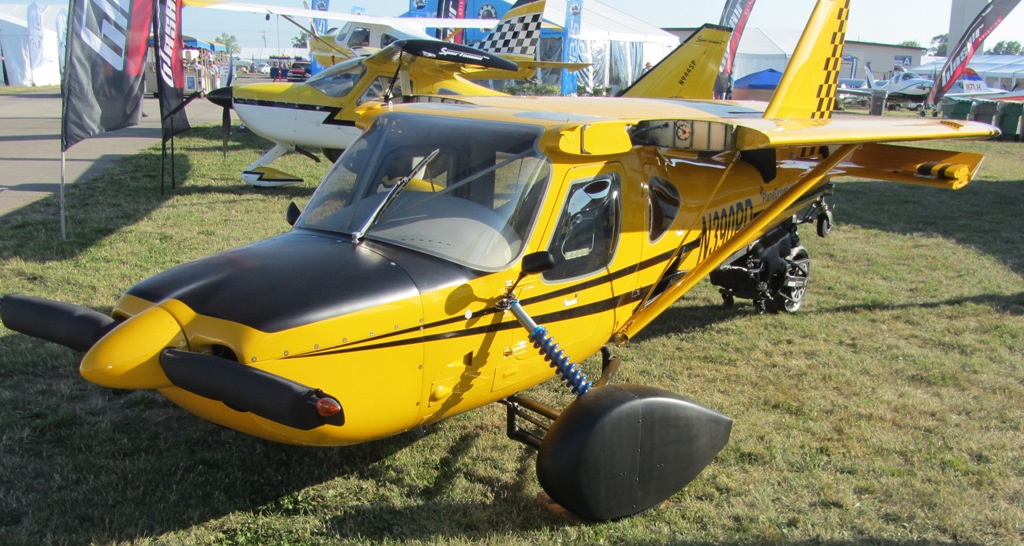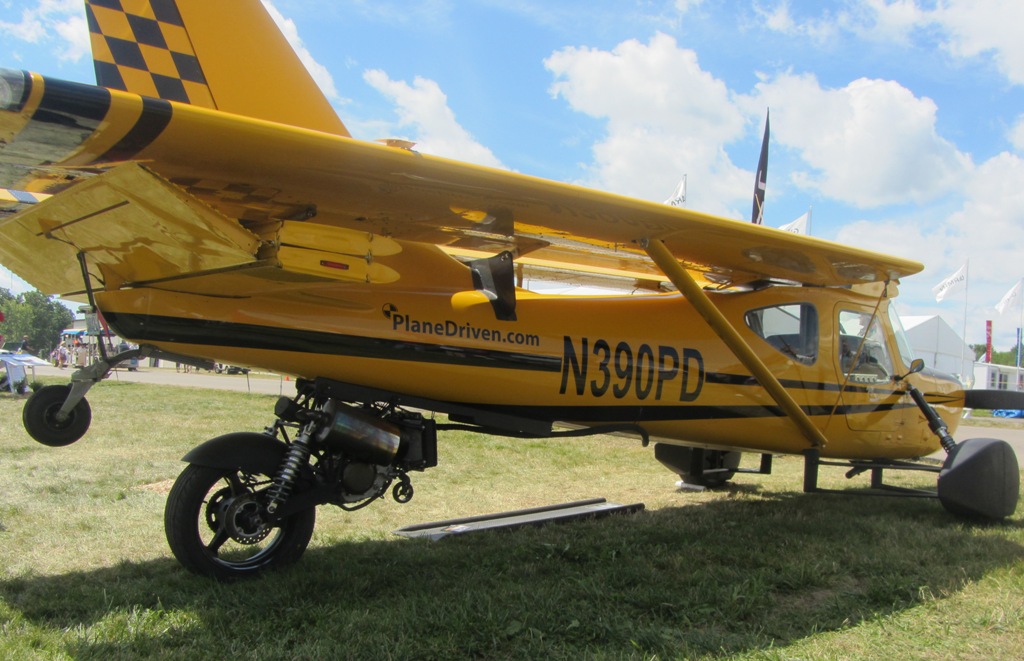Plane Driven PD-1 on:
[Wikipedia]
[Google]
[Amazon]
The Plane Driven PD-1 is a modification to the


 *PD-1
*PD-2 A second generation version of the PD-1 using the same Sportsman airframe as the PD-1. The PD-2 uses two forward mounted wheels with suspension in a conventional landing gear layout. A single rear wheel is mounted aft on the pod containing the second engine for road use. An updated pod was developed using a 50 hp four strokes engine with casters that fits into the baggage compartment. A custom lightweight four-piece carbon-fiber ramp can be used to load the pod without lifting. Gas mileage is 24mpg in ground use.
*PD-1
*PD-2 A second generation version of the PD-1 using the same Sportsman airframe as the PD-1. The PD-2 uses two forward mounted wheels with suspension in a conventional landing gear layout. A single rear wheel is mounted aft on the pod containing the second engine for road use. An updated pod was developed using a 50 hp four strokes engine with casters that fits into the baggage compartment. A custom lightweight four-piece carbon-fiber ramp can be used to load the pod without lifting. Gas mileage is 24mpg in ground use.
Glasair Sportsman 2+2
The Glasair Sportsman 2+2 is a single-engine, high wing, strut-braced, four seat kit aircraft, developed by the Glasair Aviation company.Vandermeullen, Richard: ''2012 Kit Aircraft Buyer's Guide'', Kitplanes, Volume 28, Number 12, December 201 ...
to convert it into a practical roadable aircraft. The approach is novel in that it uses a mostly stock aircraft with a modified landing gear "pod" that carries a separate engine for road propulsion.
The PD-1's wings fold along its sides, and the main landing gear
Landing gear is the undercarriage of an aircraft or spacecraft that is used for takeoff or landing. For aircraft it is generally needed for both. It was also formerly called ''alighting gear'' by some manufacturers, such as the Glenn L. Martin ...
and road engine pod slide aft along special rails, creating a driving configuration. The driving configuration compensates for the rearward center of gravity created by the folded wings, and provides additional stability for road travel.
Development
Trey Johnson, an award-winning homebuilt aircraft builder took on the challenge of making a roadable aircraft. The PD-1 is intended to be an aircraft first, and a car second. The vehicle can cruise at a speed of up to 140 mph in normal flight even with the road engine sitting as dead weight.Design
The engine pod carries a separate engine for road travel with its own fuel tank. The wheels are driven through an automatic transmission with a reverse gear. The lightweight fuselage coupled with a low power engine allows fuel economy with of usable fuel. The aircraft is registered inWashington state
Washington (), officially the State of Washington, is a state in the Pacific Northwest region of the Western United States. Named for George Washington—the first U.S. president—the state was formed from the western part of the Washington ...
as a motorcycle
A motorcycle (motorbike, bike, or trike (if three-wheeled)) is a two or three-wheeled motor vehicle steered by a handlebar. Motorcycle design varies greatly to suit a range of different purposes: long-distance travel, commuting, cruising ...
due to its 3-wheel configuration.
The wings are hinged to allow them to rotate and fold back against the rear fuselage of the plane. The horizontal stabilizer is also hinged to reduce the width of the vehicle in road travel mode.
Operational history
The prototype was constructed using Glasair's two weeks to taxi program. It was started on March 29, 2010, and the modified prototype was test flown by July 21, 2010. The prototype was displayed at the Experimental Aircraft Association Airventure airshow in 2010. The company's second generation refinement was code named the PD-X, with intention of building a marketable aircraft based on the PD-X test results.Variants


 *PD-1
*PD-2 A second generation version of the PD-1 using the same Sportsman airframe as the PD-1. The PD-2 uses two forward mounted wheels with suspension in a conventional landing gear layout. A single rear wheel is mounted aft on the pod containing the second engine for road use. An updated pod was developed using a 50 hp four strokes engine with casters that fits into the baggage compartment. A custom lightweight four-piece carbon-fiber ramp can be used to load the pod without lifting. Gas mileage is 24mpg in ground use.
*PD-1
*PD-2 A second generation version of the PD-1 using the same Sportsman airframe as the PD-1. The PD-2 uses two forward mounted wheels with suspension in a conventional landing gear layout. A single rear wheel is mounted aft on the pod containing the second engine for road use. An updated pod was developed using a 50 hp four strokes engine with casters that fits into the baggage compartment. A custom lightweight four-piece carbon-fiber ramp can be used to load the pod without lifting. Gas mileage is 24mpg in ground use.
Specifications PD-1
References
External links
* {{Flying cars Roadable aircraft Homebuilt aircraft PD-1 High-wing aircraft Single-engined tractor aircraft